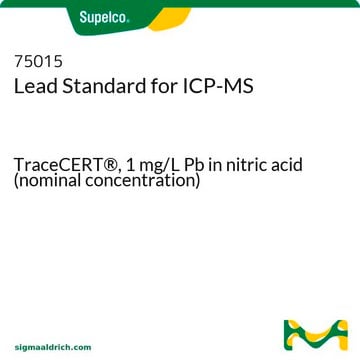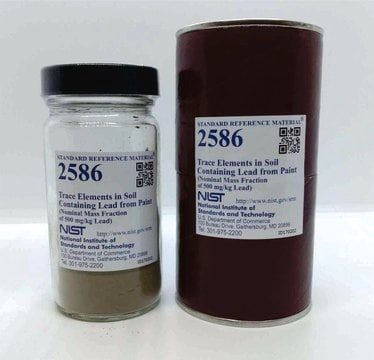310441
Lead(II) chromate
ACS reagent, ≥98.0%
About This Item
Produits recommandés
Qualité
ACS reagent
Pureté
≥98.0%
Impuretés
≤0.01% C compounds
≤0.15% solubles
Chaîne SMILES
[PbH2++].[O-][Cr]([O-])(=O)=O
InChI
1S/Cr.4O.Pb/q;;;2*-1;+2
Clé InChI
MOUPNEIJQCETIW-UHFFFAOYSA-N
Vous recherchez des produits similaires ? Visite Guide de comparaison des produits
Mention d'avertissement
Danger
Mentions de danger
Conseils de prudence
Classification des risques
Aquatic Acute 1 - Aquatic Chronic 2 - Carc. 1A - Repr. 1A - STOT RE 2
Code de la classe de stockage
6.1D - Non-combustible acute toxic Cat.3 / toxic hazardous materials or hazardous materials causing chronic effects
Classe de danger pour l'eau (WGK)
WGK 3
Point d'éclair (°F)
Not applicable
Point d'éclair (°C)
Not applicable
Équipement de protection individuelle
dust mask type N95 (US), Eyeshields, Gloves, type P2 (EN 143) respirator cartridges
Faites votre choix parmi les versions les plus récentes :
Déjà en possession de ce produit ?
Retrouvez la documentation relative aux produits que vous avez récemment achetés dans la Bibliothèque de documents.
Notre équipe de scientifiques dispose d'une expérience dans tous les secteurs de la recherche, notamment en sciences de la vie, science des matériaux, synthèse chimique, chromatographie, analyse et dans de nombreux autres domaines..
Contacter notre Service technique










